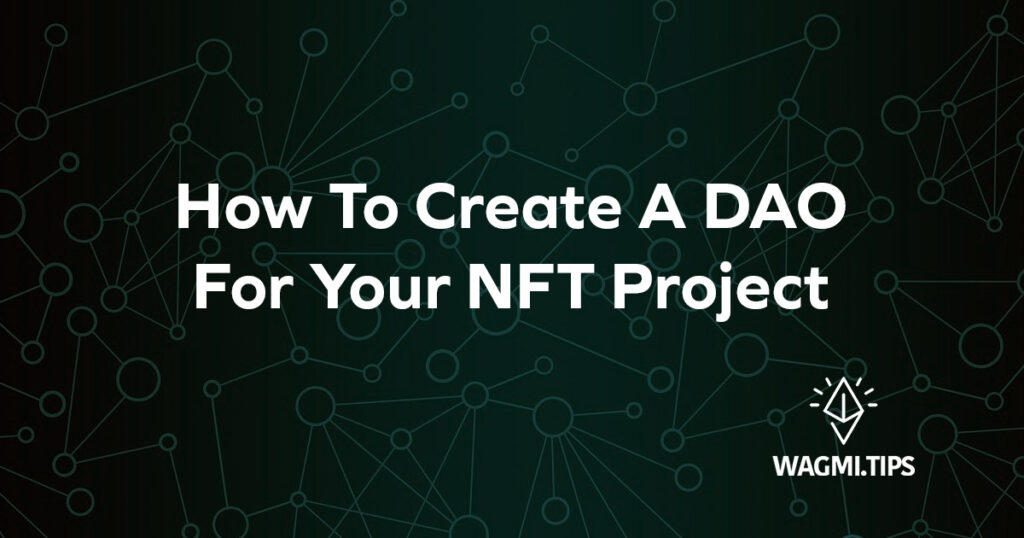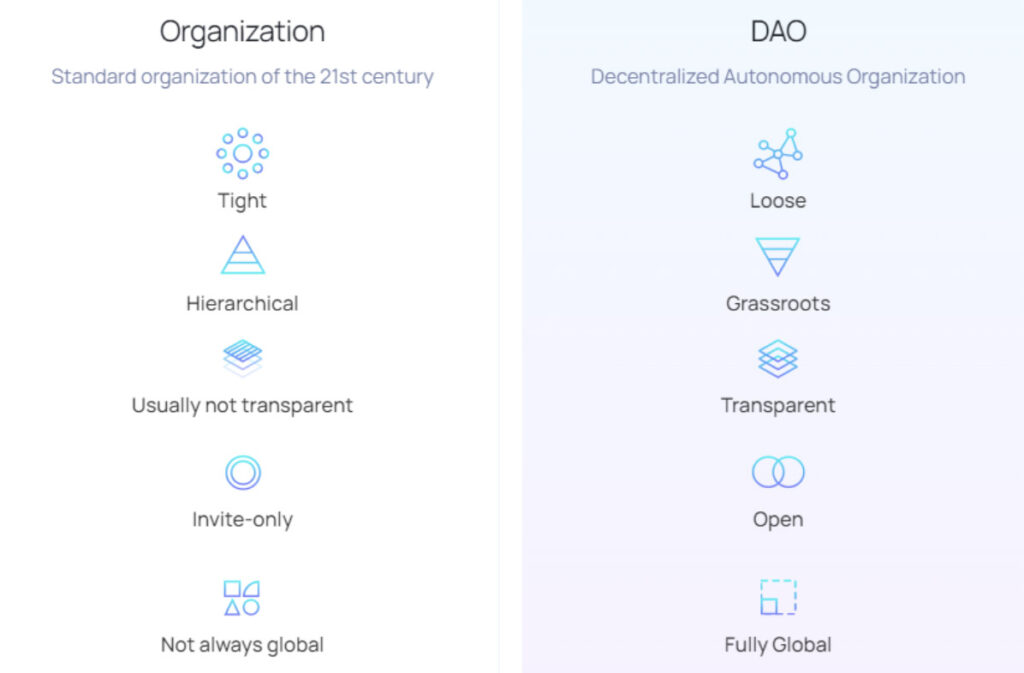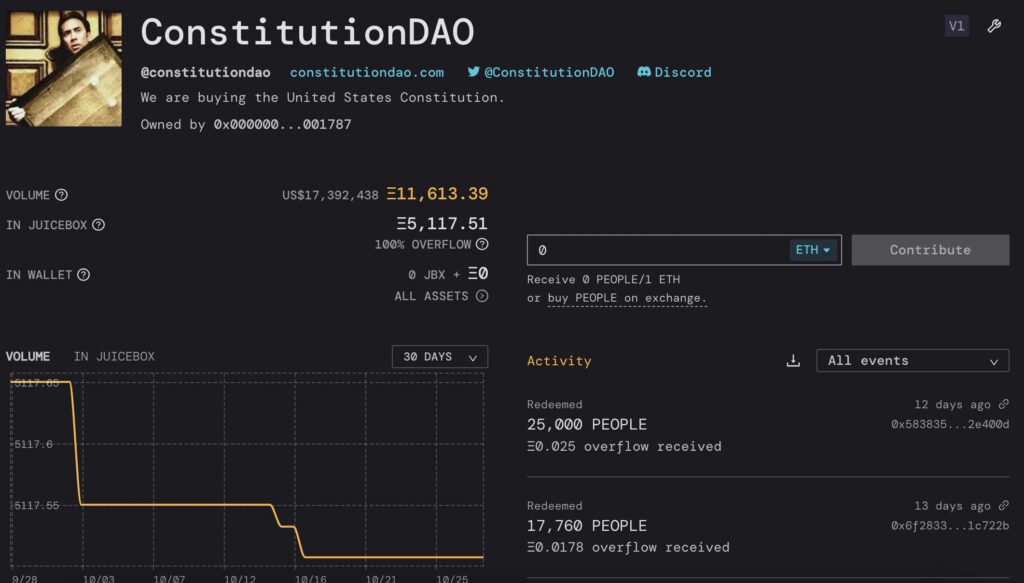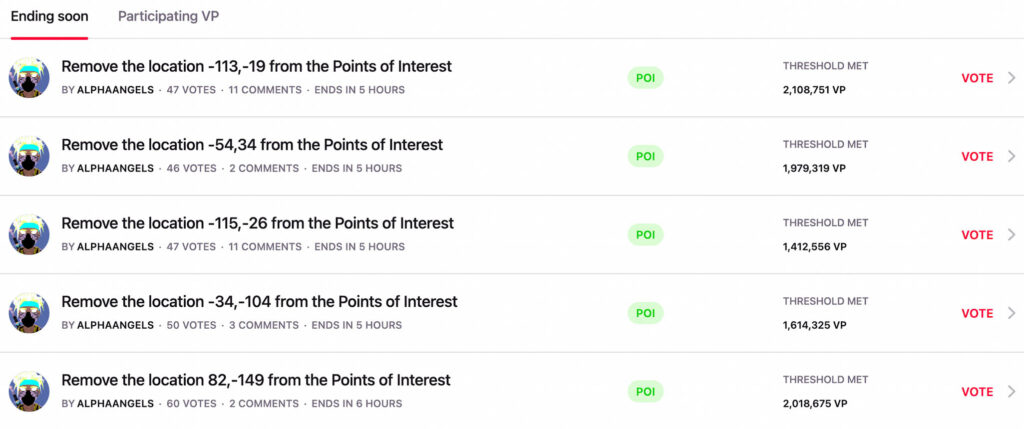How To Create A DAO For Your NFT Project
Many NFT projects are introducing DAOs to govern and decide the future of the project. Given that decentralized projects are gaining traction among the Web3 folk, having a DAO is certainly one way to attract like minded individuals into your community. Here are some easy steps to create a DAO for your own NFT project.

Table of Contents
What Is A DAO?
A decentralised autonomous organisation (DAO) is essentially an internet-native organisation that is collectively owned and managed by its members. Being made possible with the arrival of blockchain technology, a DAO typically has a few common characteristics.
For starters, there is no centralised legal entity within the DAO. DAOs operate through smart contracts which automatically execute whenever a set of criteria is met. Members that have a stake in the DAO, often by holding tokens or NFTs, then have the right to submit proposals and vote within the community. The main distinction is that a DAO is fully autonomous and transparent, where anyone can audit its code and its financial transactions.
Check out our complete guide to DAOs here.

How To Create A DAO?
Before you get down to the nitty-gritty of setting up your DAO, you first need to establish the purpose of the DAO. Whether it is to govern the treasury of your NFT project, raise funds for an upcoming project, or organise NFT airdrops, there should at least be a general direction.
Here are 3 essential steps to create a DAO:
- You need a group of developers to create the smart contract behind the DAO. All details need to be critically examined before the DAO is launched as this is basically the foundation of the DAO. After the launch, any changes made to the smart contract will have to go through a vote by the DAO members.
- The team has to set up a treasury for the DAO. Most NFT projects today raise funds by releasing an NFT collection, such as a 10k PFP collection. The NFT holders will then receive voting rights based on the NFTs that they hold.
- Once you are ready to relinquish sole control over your NFT project, you can officially deploy your DAO.
Tools For Creating A DAO
Today, there are plenty of tools to help you create a DAO for your NFT project. Here are some of the popular options in the market:
DAO-tooling
Aragon is the go-to DAO creator today, with more than 3.8k DAOs built on the platform. This platform allows non-tech people to create a DAO in a matter of minutes. After you connect to your crypto wallet, you can proceed to create an organisation. The next steps include configuring your desired template, choosing a name, setting up a token and adjusting the voting details. Finally, review your configuration and deploy the DAO.
Voting tools
There are various on-chain voting tools such as Uniswap’s Sybil and Boardroom. But due to the expensive gas fees that come along with these tools, many projects have opted for off-chain voting using tools such as Discord, Discourse, and Telegram.
On the other hand, Snapshot uses the Interplanetary File System (IPFS) so that people can vote on the blockchain without incurring gas fees. Users only need to connect their Metamask wallet to prove that they are holding a certain NFT to be eligible to vote. Large DAOs such as ENS and Bankless have been using Snapshot as well.
Treasury management
If a proposal is approved by the community, the team will release the agreed upon funds to the recipient. These funds are typically held in a multi-signature wallet such as Gnosis-Safe and JuiceBox, where the DAO admins have to cosign to send a transaction.
Two of the most popular fundraising DAOs in recent history, AssangeDAO and ConstitutionDAO, along with 900+ other DAOs have opted for JuiceBox to fund and operate their DAO treasuries. JuiceBox charges a 2.5% fee for every fund withdrawal made by a DAO, which goes into the JuiceBox treasury.

Successful DAOs To Reference
Alchemy has grouped DAOs into 8 main categories:
- DeFi protocol DAOs
- Philanthropy DAOs
- Investment and venture DAOs
- Grant DAOs
- Collector DAOs
- Media DAOs
- Social DAOs
- Sub DAOs.
Some of the largest DAOs to date can be seen in the DeFi space, including Uniswap, MakerDAO, and Aave.
There are also some DAOs in the NFT space that have seen success over the past year. For starters, Nouns DAO holds $44.5 million in its treasury where its members remain active in submitting proposals. On the other hand, Ukraine DAO continues to allocate funds to various parties in need as the war rages in their homeland.
Decentraland, one of the largest metaverse platforms, is also governed by its DAO. Holders of its native token, $MANA, or land parcel NFTs, will receive their respective voting rights, allowing them to shape Decentraland’s future.

Conclusion
Having an active DAO is one of the best ways to implement decentralisation within your NFT project. It also shows your members that their opinions truly matter. However, no DAO is always better than a poorly executed DAO as they can leave a bad taste within the community. So make sure you’re ready before you launch your DAO, and not just for the sake of having one.
